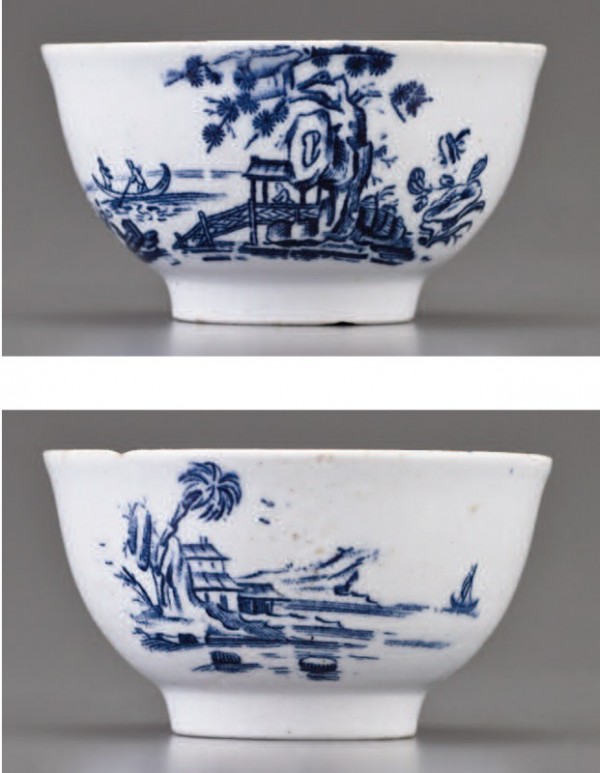
Teabowl, attributed to John Bartlam, Cain Hoy, South Carolina, 1765–1772. Soft-paste porcelain with transfer-printed decoration. H. 1 5/8", D. 2 7/8". (Private collection; photos, Gavin Ashworth.)
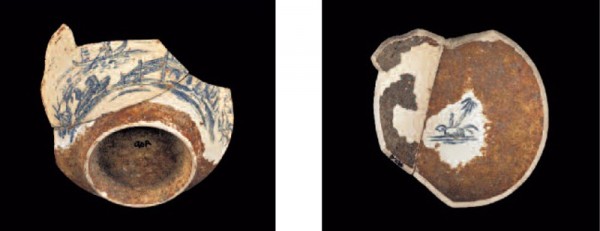
Teabowl fragment, recovered from the John Bartlam site, Cain Hoy, South Carolina, 1765–1769. Soft-paste porcelain. (South Carolina Institute of Archaeology and Anthropology; photos, Gavin Ashworth.)
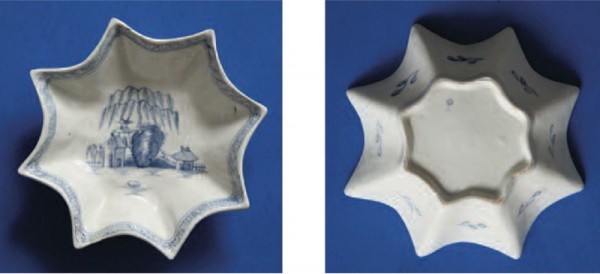
Dish, possibly the American China Manufactory, Philadelphia, Pennsylvania, 1770–1772. Soft-paste porcelain. D. 5 7/16". (Private collection; photo, Nicholas Panes.) This dish is designated “Sample STR.”
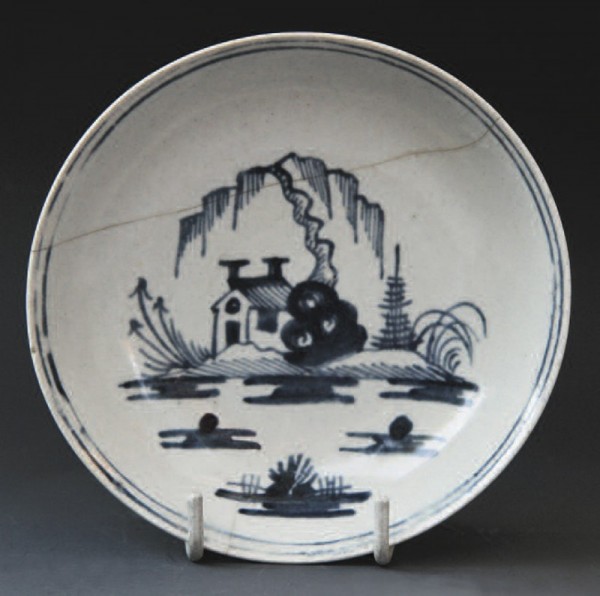
Saucer, possibly the American China Manufactory, Philadelphia, Pennsylvania, 1770–1772. Soft-paste porcelain. D. 4 15/16". (Private collection; photo, Nicholas Panes.) This saucer is designated “Sample DB1.”
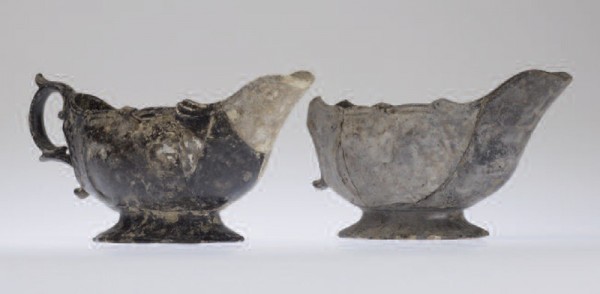
Sauceboats, probably the American China Manufactory, Philadelphia, Pennsylvania, 1770–1772. Soft-paste porcelain. H. 3 3/8", W. 3", L. 6 1/2". (Independence National Historic Park, Philadelphia; photo, Jed Levin.) These two reconstructed sauceboats (samples 2028A, 2028B) were recovered from Independence National Historic Park in Philadelphia. Based on their composition and mineralogy, they have been attributed to the Bonnin and Morris factory.
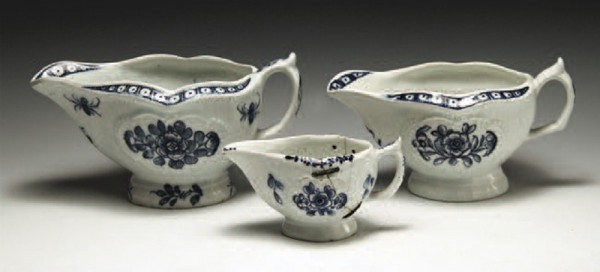
Three sauceboats of a class sometimes attributed to Isleworth (London) factory, England, 1770–1775. Left to right: (U3) L. 6 1/8"; (U4) L. 3 15/16"; (U5) L. 5 1/2". Mark: crescent on U5; others unmarked. (Private collection; photo, Nicholas Panes.)

Plates and dish of a class sometimes attributed to the Isleworth (London) porcelain factory, England, 1765–1775. Soft-paste porcelain. Left to right: (U6, plate) D. 7 1/4"; (U7, dessert dish) L. 8 15/16"; (U8, plate) D. 8". Mark (on all): mock Chinese characters. (Private collections; photos, Ray Howard [U6] and Nicholas Panes [U7, U8].)

Plates with a different style of decoration from those illustrated in fig. 7; tentatively attributed to the Isleworth (London) porcelain factory, England, 1765–1775. Soft-paste porcelain. Left to right: (U9, fluted plate) D. 7 1/8"; (U10, lobed plate) D. 8 1/8"; (U11, basket) D. 8 3/4". Marks: none. (Private collections; photos, Ray Howard [U9, U11] and Nicholas Panes [U10].)
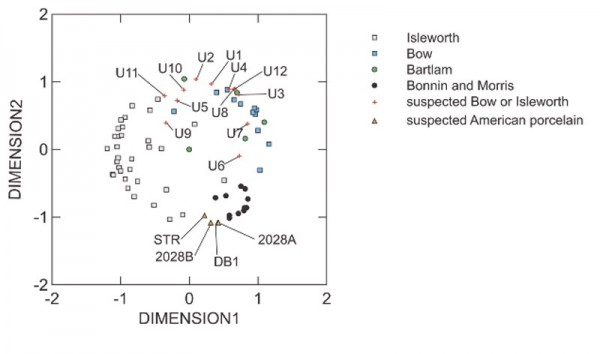
MDS plot for paste compositions of Bartlam, Bonnin and Morris, Bow, and Isleworth porcelain, plotted against data for four suspected American porcelain objects (two intact and two excavated), and twelve intact porcelain objects thought to be either Bow or Isleworth.
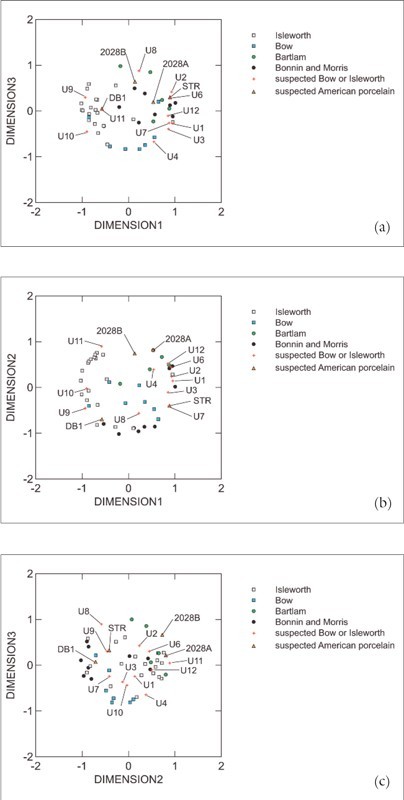
MDS plots for glaze compositions. (a) dimensions 1 versus 2; (b) dimensions 2 versus 3; (c) dimensions 1 versus 3.
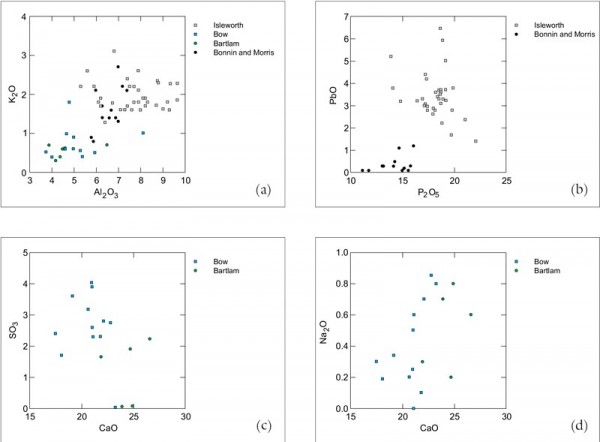
Discrimination diagrams for sulphurous phosphatic porcelain pastes. (a) K2O versus Al2O3; (b) PbO versus P2O5; (c) SO3 versus CaO; (d) Na2O versus CaO.

Discrimination diagrams for glazes on sulphurous phosphatic porcelains. (a) TiO2 versus Na2O; (b) PbO versus K2O (the line encloses the Isleworth field).
